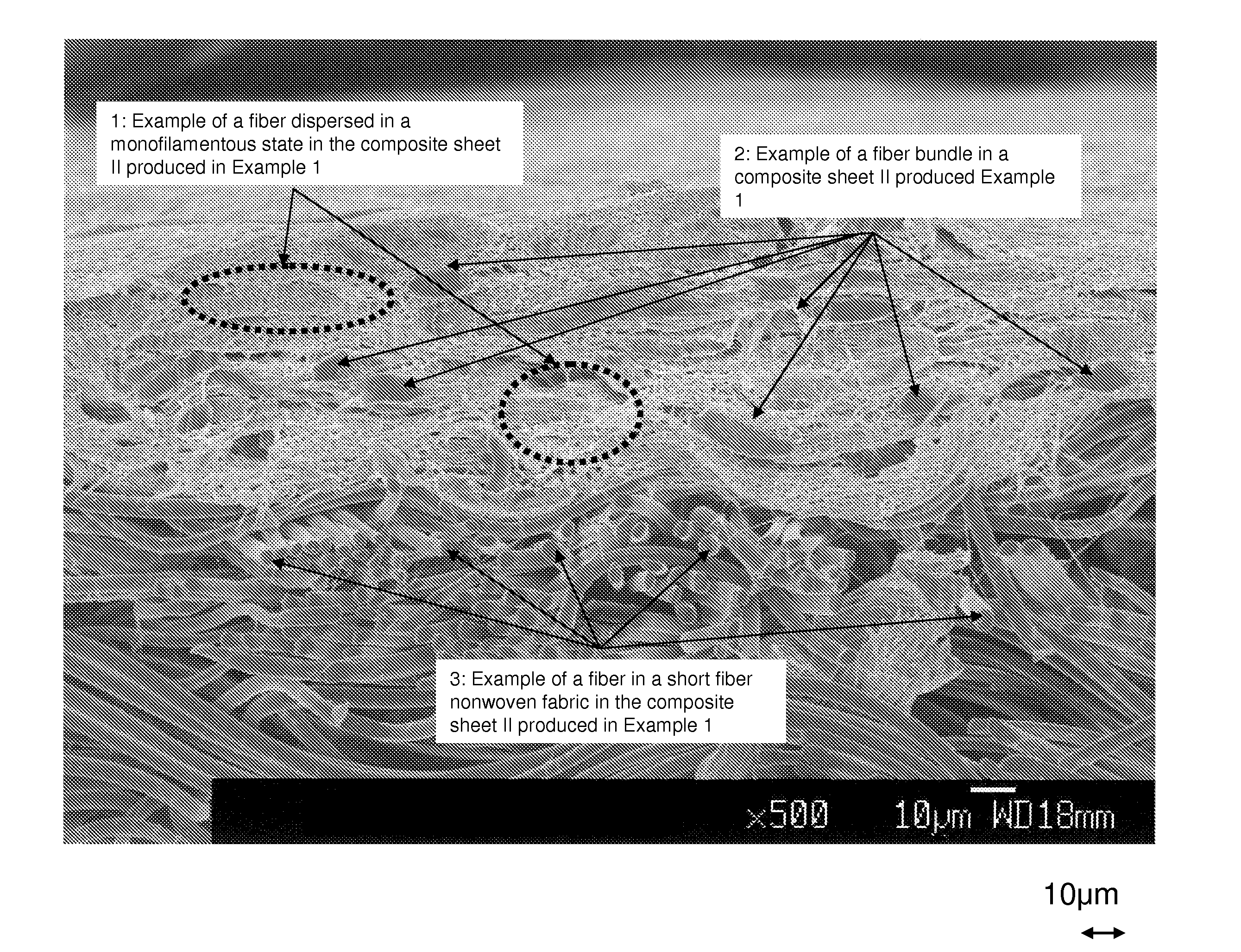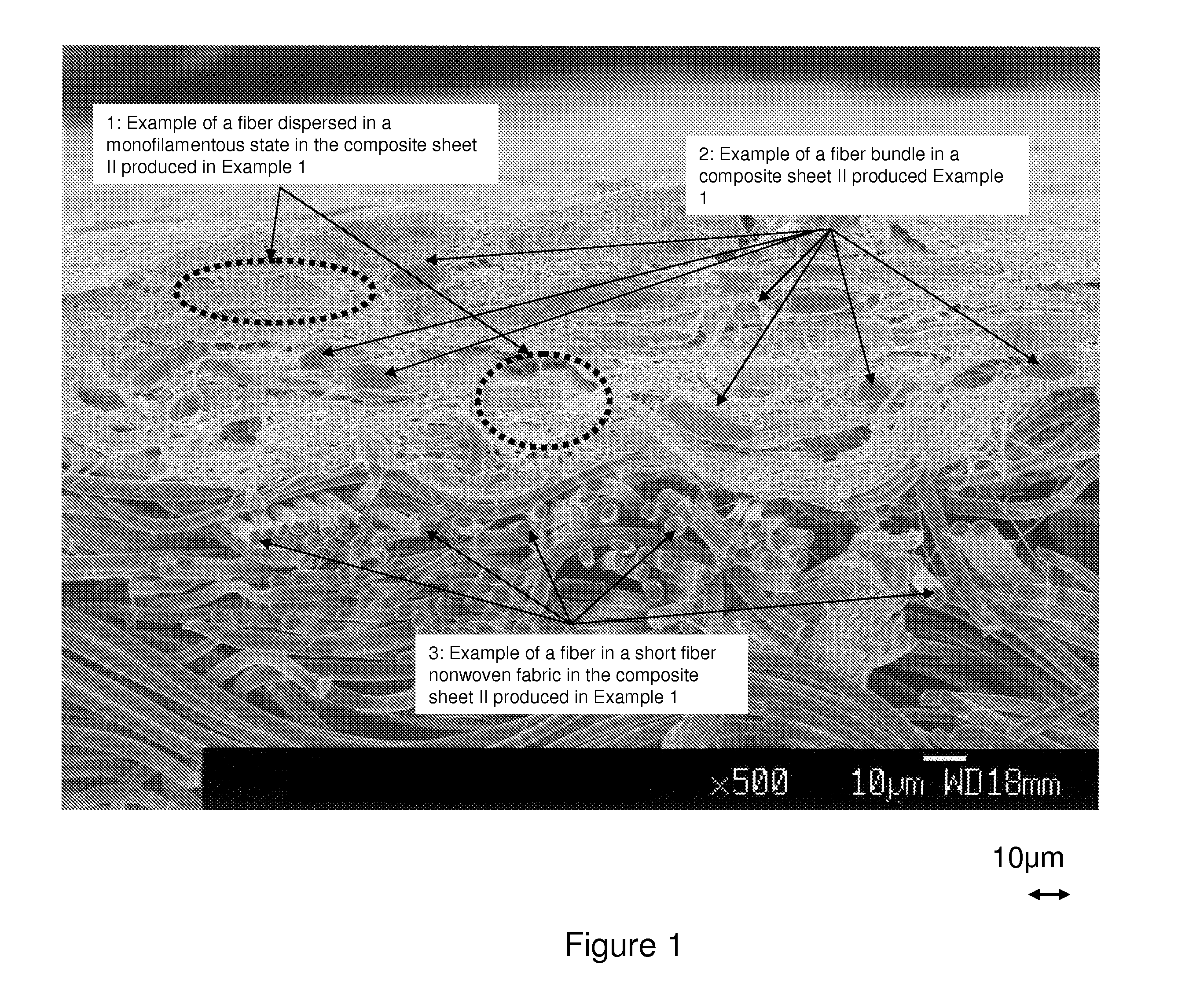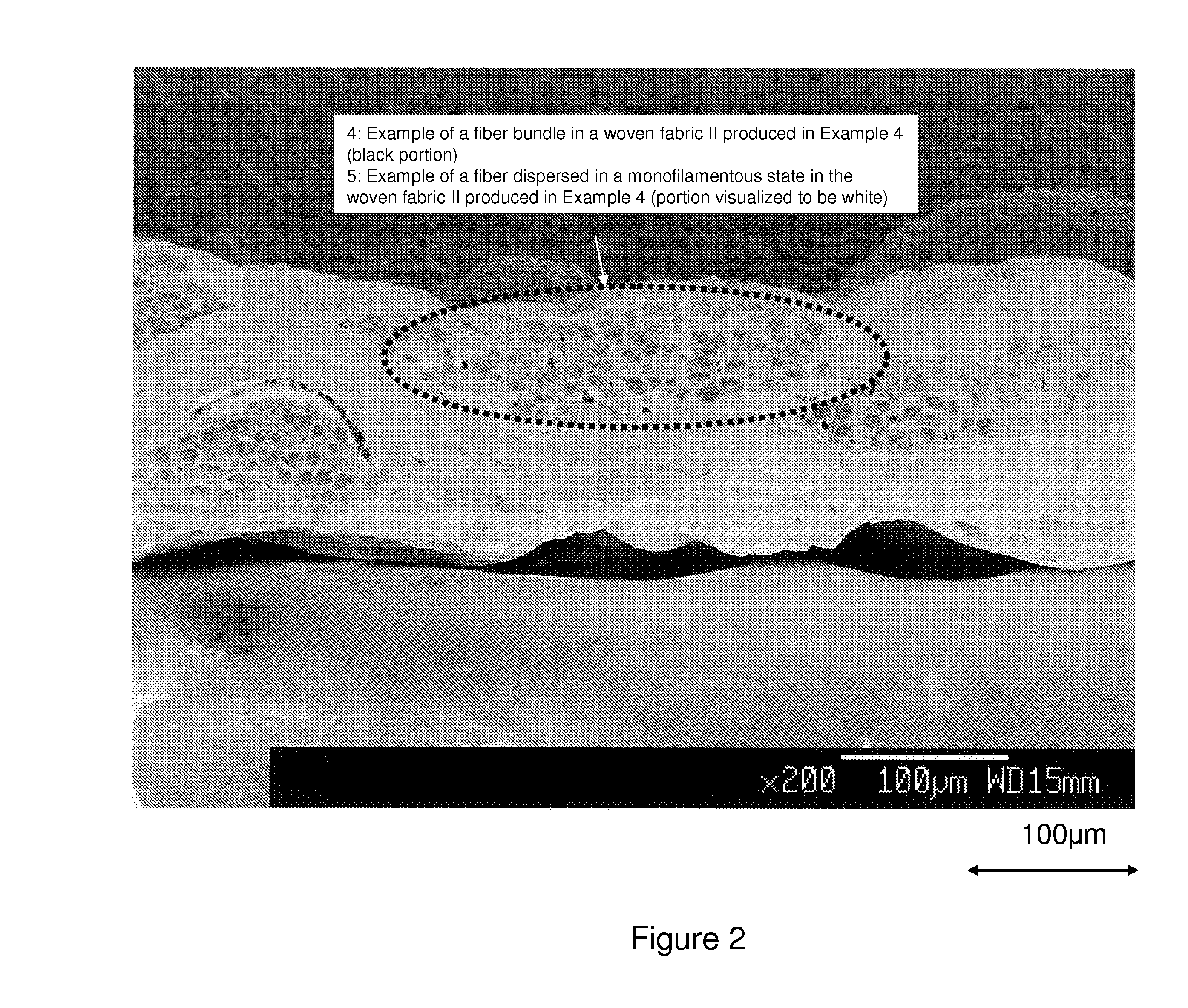Fiber structure and method for production thereof
- Summary
- Abstract
- Description
- Claims
- Application Information
AI Technical Summary
Benefits of technology
Problems solved by technology
Method used
Image
Examples
example 1
Production of Nonwoven Fabric
[0125]Nylon 6 (hereinafter referred to as N6) having melt viscosity of 212 Pa·s (262° C., shear rate: 121.6 sec−1) and a melting point of 220° C. and poly-L-lactic acid (optical purity: 99.5% or more) having a weight average molecular weight of 120,000, melt viscosity of 30 Pa·s (240° C., 2432 sec−1) and a melting point of 170° C. were used and the content of N6 was adjusted to 45% by weight, and then the mixture was melt-kneaded at a kneading temperature of 220° C. to obtain polymer alloy tips.
[0126]The weight average molecular weight of poly-L-lactic acid was determined by the following procedure. A chloroform solution of a sample was mixed with THF (tetrahydrofuran) to obtain a measuring solution. The concentration of polylactic acid was adjusted to 0.4% by weight. Using gel permeation chromatography (GPC) Waters 2690 manufactured by Waters Corporation, a polystyrene equivalent weight average molecular weight was determined by measuring at 25° C. The ...
example 2
[0133]Two kinds of nonwoven fabrics were integrated by conducting a treatment of injecting a water flow to the composite sheet I obtained in Example 1 under the same conditions as in Example 1, except that the pressure of the water flow was adjusted to 1 MPa. The thus obtained sheet is referred to as a composite sheet III. The composite sheet III was observed by SEM. As a result, the entire surface of the fiber structure is covered with fibers (B) having a number average fiber diameter of 110 nm in a monofilamentous state without clearance. In the cross-section, the fibers (B) having a fiber diameter of 1 μm or less (number average fiber diameter: 110 nm) dispersed in a monofilamentous state form fine void spaces due to tangles or bends and also exist together with a fiber bundle (A) having a fiber bundle diameter 15.5 μm).
[0134]The obtained composite sheet was slitted to give a tape having a width of 38 mm and polishing characteristics were evaluated. The composite sheet had a thic...
example 3
[0136]The fiber structure obtained in Example 1 was embossed to form random strip-shaped concave portions. The treating rate was 1.5 m / min and the temperature of a sculpted roll was 140° C. On the surface after embossing, stripe-shaped recesses having a depth of several micron meter which surround a region of about 500 μm were formed. Under the same conditions as in Example 1, the disk was polished. As a result, the disk after polishing showed surface roughness of 0.27 nm and the number of scratches of 1.2 and is extremely excellent in smoothness and low scratch properties. The polishing rate was high such as 4.6 mg / min.
PUM
| Property | Measurement | Unit |
|---|---|---|
| Temperature | aaaaa | aaaaa |
| Length | aaaaa | aaaaa |
| Length | aaaaa | aaaaa |
Abstract
Description
Claims
Application Information
 Login to View More
Login to View More - R&D
- Intellectual Property
- Life Sciences
- Materials
- Tech Scout
- Unparalleled Data Quality
- Higher Quality Content
- 60% Fewer Hallucinations
Browse by: Latest US Patents, China's latest patents, Technical Efficacy Thesaurus, Application Domain, Technology Topic, Popular Technical Reports.
© 2025 PatSnap. All rights reserved.Legal|Privacy policy|Modern Slavery Act Transparency Statement|Sitemap|About US| Contact US: help@patsnap.com



